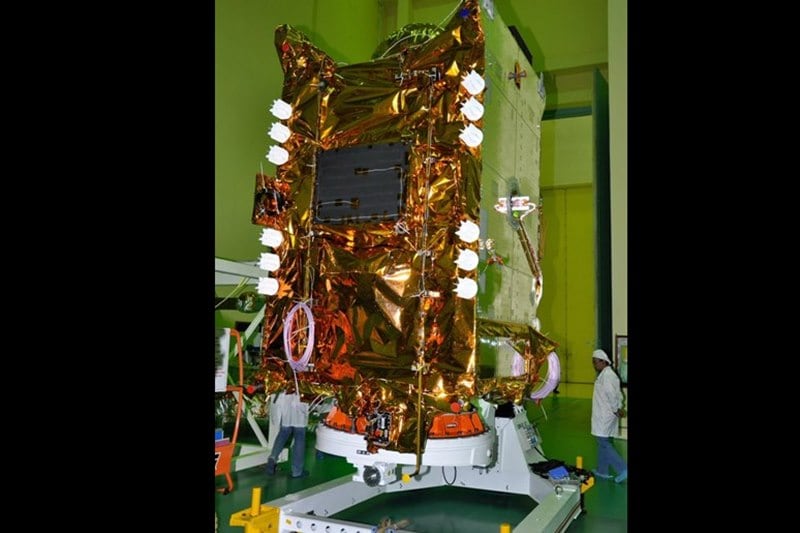-

ISRO launched the South Asia Communication Satellite on May 5, 2017. Prime Minister Narendra Modi had termed the Geostationary Communication Satellite as India’s “priceless gift” to its neighbouring countries. The Satellite will boost connectivity among nations in the region. The GSAT-9 satellite will ride piggyback on the space agency’s rocket GSLV-F09 with indigenous Cryogenic Upper Stage. South Asia Satellite undergoing test, in clean room (Twitter/PIB)
-
GSAT-9 is a Geostationary Communication vehicle providing various communication applications in Ku-band with coverage over South Asian countries. GSLV-F09 closing in (Twitter/PIB) -
The satellite will enable a full range of services to neighbours including the areas of telecommunication, television, direct-to-home, VSATs, tele-education and telemedicine. GSLV-F09 undergoing Vibration test, Acoustic test, Solar array deployment test. (Twitter/PIB)
-
The satellite will also also provide secure hotlines among the participating nations, which will be useful for management of Disasters like earthquakes, cyclones, floods and tsunamis. GSLV-F09 being unloaded from its transportation container. (Twitter/PIB)
-
The main structure of historic satellite is cuboid in shape built around a central cylinder with a mission life of more than 12 years. (Twitter/PIB)
-
The satellite, which costs around Rs 235 crore, is fully-funded by Indian Government.(Twitter/PIB)
-
GSAT-9 is touted as a 'invaluable gift' to its South Asian neighbours.(Twitter/PIB)
-
Seven out of the eight SAARC countries- India, Sri Lanka, Bhutan, Afghanistan, Bangladesh, Nepal and Maldives, are part of the project. (Twitter/PIB)
-
Cryogenic Upper Stage integration of GSLV-F09 Satellite launch vehicle.
-
The satellite will give an unprecedented boost to each of the participating countries in terms of DTH, certain VSAT capacity plus linking among the states for both disaster information transfer and also in terms of library type of things. GSLV-F09 flanked on either side, by one half each, of the vehicle that took it to space. (Twitter/PIB)